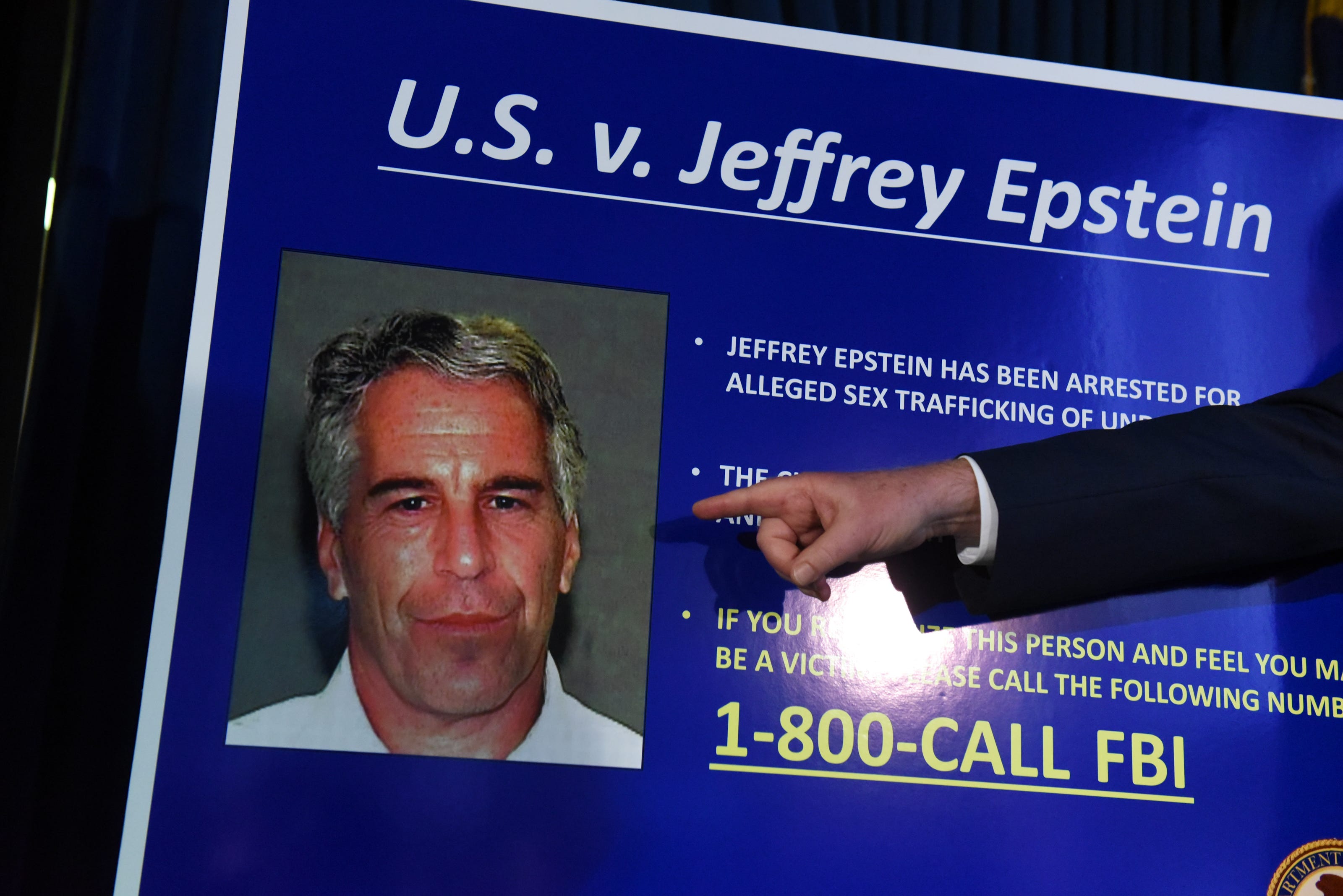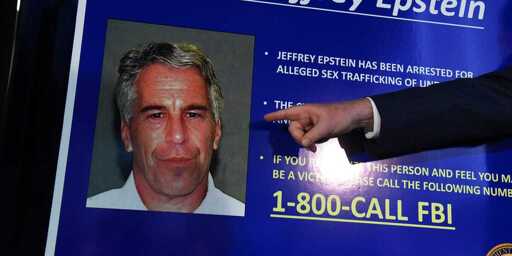 U.S. Attorney for the Southern District of New York announcing charges against Jeffery Epstein on July 8, 2019 in New York City. Photo by Stephanie Keith/Getty Images.
U.S. Attorney for the Southern District of New York announcing charges against Jeffery Epstein on July 8, 2019 in New York City. Photo by Stephanie Keith/Getty Images.
The story below is written by Martin Gottesfeld. Subscribe to his Substack here and watch his interview on Breaking Points below:
This report discusses child sexual abuse. If you or someone you know is unsure whether to file an abuse report or just need support, contact the National Children’s Alliance at www.nca-online.org or 1-800-239-9950. This report also discusses suicide. If you or people you know are at risk of self-harm, call or text 988 to reach the Suicide & Crisis Lifeline for 24-hour support.
Just about everyone with a soapbox has opined in the past couple weeks about Epstein and his death. Few of them have seen the inside of a jail cell or the view from the defendant’s table in a federal courtroom as I have.
More than that, I am, perhaps, the only journalist to see the bowels of the now-closed facility where Epstein died or spend time in the particular cells where he was segregated.
I took 500 pages of notes in those cells while I waged a 100-day hunger strike. Rolling Stone had asked me to “write down everything” for a feature on my case, which it titled The Hacker Who Cared Too Much: How a Crusade to Save Children Landed a Hacker in Prison. I was also a HuffPost contributor, determined to raise the alarm that the facility was dilapidated, its staffers were out of control and disaster loomed large on the horizon. But, back then, before El Chapo or Epstein arrived, the Metropolitan Correctional Center in New York largely flew under the radar. Neither I nor the officers who delivered me there from another facility had ever heard of it.
The cameras worked.
I know, for instance, that the cameras worked when I was there, from November 2016 to February 4, 2017. The idea that a modern prison could neglect its camera system to the point of dysfunction yet continue daily operations is, frankly, silly. It would, e.g., endanger staff and jailhouse informants and cripple jailhouse investigations of gangs and contraband.
The idea that M.C.C. New York could do so is especially silly given that it hosted a special-administrative-measures (SAMs) unit directly above the special-housing unit (SHU) where Epstein died, with a door between the two units. The SAMs unit, according to the Justice Department, was used to house al-Qaeda suspects and others like El Chapo, whose communications, they alleged, even with attorneys, posed national security risks. Thus, if the Justice Department is to be believed, dysfunctional cameras in the SHU would have threatened national security.
Moreover, I was repeatedly taken into the SAMs unit, known as 10 South. Each trip I saw the monitoring screen for the cameras on the 10th floor. They worked.
There was also at least one camera in every cell I occupied in the SHU where Epstein died; I did not serve in his immediate hallway (L) and it is possible L is the only place where cells have no cameras. If that’s the case, it’s remarkable that he’d have been moved there given his status. The cells in one particular part of that SHU, known as G Tier, had two cameras. The problem is that prisoners routinely covered the cameras for privacy, and the staffers were generally unprepared to send a team to each cell every day to uncover them by force. Were they to have done so, the prisoners could easily have just covered them again. This is the nuance that is lost in the conversation about “were the cameras working?”
I also know the cameras had power because I heard their apertures attempt to auto-adjust for the light level when I covered them. Once, apparently for an inspection, the SHU lieutenant, Mr. Lopez, asked us all to uncover the cameras, just for the day. Again I heard, but also saw, the camera aperture auto-adjust for the light level.
Epstein was early in his proceedings.
Any competent attorney would have told Epstein that he had two very important things going for him: 1) the money to retain a vigorous defense team and 2) the likely prospect of cutting a deal, either with the then-Trump administration or a future administration.
As to the first, one need only look at Sean “P. Diddy” Combs, who just beat federal sex-trafficking charges not wholly dissimilar to those Epstein faced in the same federal courthouse and from the same federal prosecutors. Epstein further had bail pending before the U.S. Court of Appeals. Federal appellate courts, in turn, have found that even mafiosi are entitled to bail, provided they are able to pay for 24-hour monitoring that reasonably ensures public safety and mitigates flight risk.
As for cutting a deal, one need only consider the offer apparently on the table now for Ghislaine Maxwell and Federal Rule of Criminal Procedure 35(b) (“Reducing a sentence for substantial assistance”). Such a deal would have been hardly unprecedented in New York’s federal courts, where Robert Decker, the American manager of a “pedophile hotel” in Mexico, testified against its patrons and was released in about five years.
Frankly, those in pretrial detention in Epstein’s position rarely die by suicide. Instead, the prisoners most tempted to end their own lives are those, e.g., who have been fingered by all their “boys,” and who, thus, have no one left to rat out for a deal. Epstein, in contrast, had no shortage of “clients” he could betray.
Further, as at least somewhat of a Wall Street quant, Epstein was almost certainly familiar with game theory and one of its core exercises: the prisoner’s dilemma. It contemplates whether to cooperate with law enforcement and betray an accomplice.
There were, it is also worth noting, several dozen men sentenced to die for heinous crimes (which is not to say any particular one of them is guilty of the crime(s) charged) who had not died by suicide on the day the Biden administration announced the commutation of their death sentences.
Despite all this we are told that the likeliest scenario is that a rich and apparently uncompromising hedonist ended his own life in pretrial detention, before his final bail determination, apparently to save his co-conspirators.
What happened to the human witnesses?
At any given time dozens of men likely occupied the SHU where Epstein died. Almost certainly someone was in an adjacent or nearby cell. The Justice Department does not hesitate to recruit prison informants to support its own conspiracy charges.
So why have the media not interviewed the prisoners who were in a position to see what happened on Epstein’s tier that night? And why do federal prosecutors seem disinterested in their stories?
The silence is deafening.
From Drop Site News via this RSS feed


